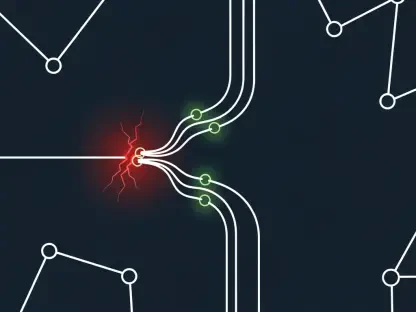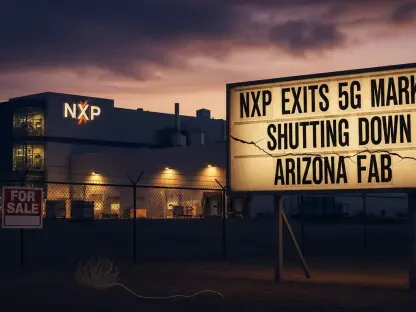In a landmark alliance that is set to reshape the landscape of clean energy consumption in the United States, Google, Intersect Power, and TPG Rise Climate have announced a strategic partnership aiming at the intersection of clean power generation and data center expansion. This pioneering collaboration intends to place the United States at the forefront of artificial intelligence (AI) development. By aligning new data center loads with additional clean energy generation, this partnership aims to minimize the necessity for new transmission infrastructure while accelerating operational timelines.
Strategic Partnership Overview
Aligning Clean Power with Data Centers
The driving force behind this partnership is the development of industrial parks across the United States that boast gigawatts of data center capacity fueled by contiguous clean energy facilities. These industrial hubs are not just centers of technological advancement; they symbolize a harmonious blend of digital infrastructure and renewable energy. By strategically co-locating these facilities, the partners hope to create a sustainable model of power generation and usage that ensures reliability.
These innovative industrial parks serve a dual purpose. On one hand, they address the burgeoning demand for data processing power driven by AI advancements and increased digital activity. On the other, they highlight the potential of renewable energy sources to meet this demand sustainably. This novel approach underscores the partnership’s commitment to tackling the environmental challenges posed by rapidly expanding digital infrastructure.
Timeline and Investment
Looking towards the future, the ambitious project is poised to see its first phase operational by 2026, with an expected full completion by 2027. This timeline is indicative of the urgency and commitment displayed by the involved stakeholders to expedite the project. The substantial financial backing from Google, TPG Rise Climate, and other investors in Intersect Power underlines the significance attributed to the success of this initiative. The infusion of capital is not just an investment in infrastructure; it is a vote of confidence in a vision for a more sustainable and technologically advanced future.
Central to this investment strategy is the commitment to long-term sustainability. By pooling resources and expertise, these organizations aim to create a self-sustaining, scalable model that can be replicated across different regions. This not only speeds up the development process but also ensures that the economic benefits, such as job creation and regional development, are felt nationwide.
Motivations Behind the Partnership
AI’s Potential and Economic Impact
A blog post by Ruth Porat, President & Chief Investment Officer at Alphabet and Google, sheds light on the motivations driving this groundbreaking partnership. Porat articulates a compelling vision where the immense potential of AI could lead to unprecedented scientific breakthroughs, offering solutions to critical challenges in various fields such as healthcare and education, and fostering significant economic growth. The economic implications are staggering, with economists predicting that AI could boost the U.S. GDP by over a trillion dollars annually by 2030.
This monumental potential, however, comes with its own set of demands. Harnessing AI to its fullest capabilities requires substantial energy resources, not just in terms of quantity but also in reliability and sustainability. The partnership’s strategic focus on clean energy aims to meet these demands while ensuring that the benefits of AI advancements are environmentally sustainable. This approach aligns with a broader vision of a future where technological progress and environmental stewardship go hand in hand.
Expanding Electricity Capacity
With the prospect of AI driving massive boons for the U.S. economy and job creation, there is an urgent need to expand electricity capacity with secure and reliable power sources. Google’s evolved role in developing digital infrastructure showcases its innovative approach of co-locating grid-connected carbon-free energy with data center investments. This intricate integration forms the bedrock of the proposed infrastructure projects, intending to enhance ongoing efforts to unlock new transmission infrastructure and optimize current grid utilization.
The co-location model not only reduces the strain on existing infrastructure but also ensures that new capacity is brought online faster and more efficiently. This approach is critical in addressing the growing energy needs of AI and other digital advancements. By strategically aligning renewable energy projects with data center development, the partnership aims to create a resilient and flexible grid that can adapt to future demands while minimizing environmental impact.
Addressing Grid Constraints
Current Grid Challenges
The article brings to the fore a significant issue confronting America’s electricity grid, which is increasingly struggling to keep pace with burgeoning economic growth. Several regional grids are facing significant generation capacity and transmission bottlenecks, rendering them unable to accommodate the rising demand for electricity. This challenge is exemplified by the fact that the typical timeframe from proposal to construction for power projects has more than doubled, escalating from under two years for projects completed between 2000 and 2007 to over four years for those built from 2018 to 2023.
Recognizing these pressing constraints, the partnership aims to introduce a new paradigm in clean energy designed specifically for data centers. This approach is not just about adding capacity but about ensuring that the added capacity is sustainable and aligned with future technological needs. By focusing on clean energy and innovative grid solutions, the partnership seeks to overcome the current limitations and create a more resilient and flexible energy infrastructure.
Partnership Solutions
To mitigate these grid constraints, the proposed partnership envisages delivering new clean energy assets designed explicitly for data centers. Intersect Power is tasked with the construction of new clean energy facilities in regions identified for their strategic interest, with Google stepping in as the anchor tenant to provide consistent power offtake. This strategic alignment ensures that Google data centers will be backed by their bespoke clean power sources, thereby enhancing grid reliability and reducing operational timelines.
This arrangement is revolutionary in its approach, creating a symbiotic relationship between data centers and clean energy facilities. By synchronizing the development timelines of both, the partnership ensures that new data centers are brought online precisely when the new clean energy capacity becomes available. This not only reduces the strain on the existing grid but also fosters a more sustainable approach to expanding data center capacity.
Convergence of Decarbonization and Digitization
TPG Rise Climate’s Role
Jim Coulter, Executive Chairman of TPG and Managing Partner of TPG Rise Climate, has highlighted the intersection of two significant trends: decarbonization and digitization. Coulter points out that this partnership melds together a leading carbon-free power producer, one of the world’s foremost hyperscalers, and a top private equity investor in climate solutions. This alliance aims to deliver carbon-free data centers at a scale and cost efficiency that is unprecedented, leveraging the collective expertise and resources of each partner.
By bringing together diverse yet complementary skills and resources, the partnership embodies the spirit of collaboration that is vital for tackling global challenges. The integration of decarbonization and digitization efforts not only addresses immediate energy needs but also sets the stage for long-term sustainable development. This holistic approach ensures that the benefits of technological advancements are realized without compromising environmental integrity.
Collaborative Efforts
This new agreement signifies a convergence of pioneers at the crucial junction of clean energy and data center development. Intersect Power, a prominent player in the clean energy sector, is renowned for its scalable low-carbon solutions tailored for global energy markets. As a portfolio company of TPG Rise Climate, Intersect Power benefits from the strategic backing of a market-leading private equity investor dedicated to advancing climate solutions worldwide. Google, leveraging decades of investment in computing infrastructure, contributes some of the world’s most efficient data centers, catering to the growing demand for Google Cloud and other digital services relied upon daily by organizations and individuals.
The collaborative essence of this partnership is its strength. By combining the technical expertise of Google, the innovative solutions of Intersect Power, and the strategic vision of TPG Rise Climate, they can tackle complex challenges that none could address alone. This synergy not only accelerates development timelines but also ensures that the solutions are robust, scalable, and sustainable. The partnership sets a new standard for integrating digital and energy infrastructure development.
Innovative Solutions and Future Prospects
Evolution of Traditional Relationships
Sheldon Kimber, the CEO and Founder of Intersect Power, highlights the transformative nature of this partnership—it marks a significant evolution of the traditional relationship between hyperscalers and power providers. The collaborative effort is driven by a mutual objective to develop innovative solutions that expand clean power capacity at scale while minimizing the strain placed on the grid. Kimber underscores the importance of deep, collaborative partnerships, and creative problem-solving to meet the unprecedented surge in AI growth and the escalating electricity demands of society. This approach promises to unlock substantial opportunities for rural economic development, providing a blueprint for future collaborations.
Kimber’s vision is about more than just meeting immediate energy needs; it’s about creating a dynamic and adaptable infrastructure that can evolve with future technological advancements. By fostering strong partnerships and encouraging innovation, the collaboration aims to create a resilient energy ecosystem that supports sustainable growth. This holistic approach ensures that the benefits of technological advancements are distributed equitably, fostering economic development in underserved regions.
Blueprint for Future Projects
In a groundbreaking partnership set to transform clean energy use in the United States, Google, Intersect Power, and TPG Rise Climate have joined forces. This strategic alliance is focused on the convergence of clean power generation and the expansion of data centers, positioning the U.S. as a global leader in artificial intelligence (AI) development. By synchronizing the energy demands of new data centers with fresh sources of clean energy, the collaboration aims to reduce the need for new transmission infrastructure, thereby expediting operational timelines. This approach not only supports the rapid deployment of AI technologies but also underlines the significance of sustainable energy consumption. Additionally, this partnership could serve as a model for other industries, demonstrating how eco-friendly energy solutions can be integrated into large-scale technological advancements. By leveraging their combined expertise and resources, Google, Intersect Power, and TPG Rise Climate seek to create a more sustainable and technologically advanced future, setting a precedent for innovation in both the energy and tech sectors.









